Last Updated on October 12, 2021
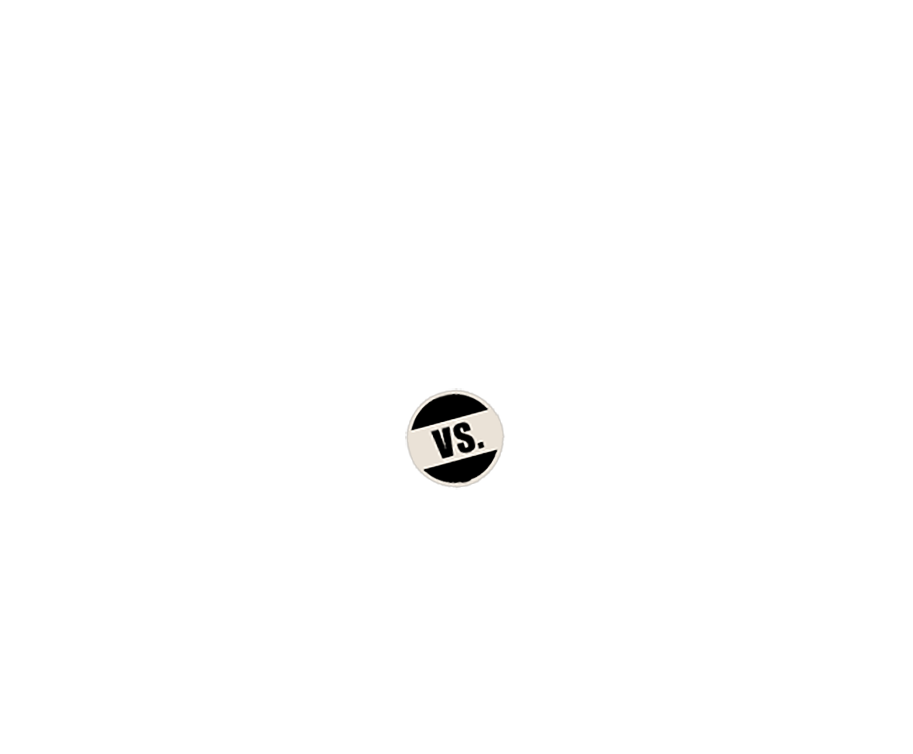
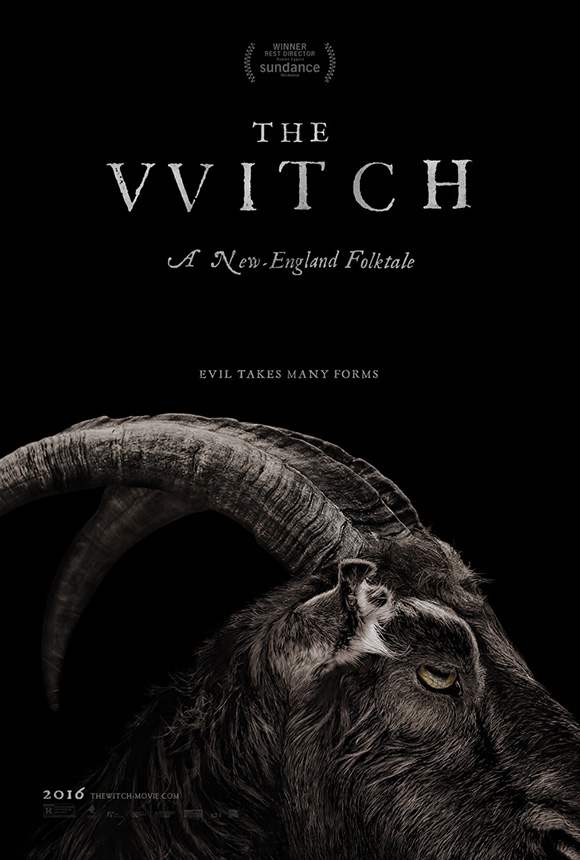
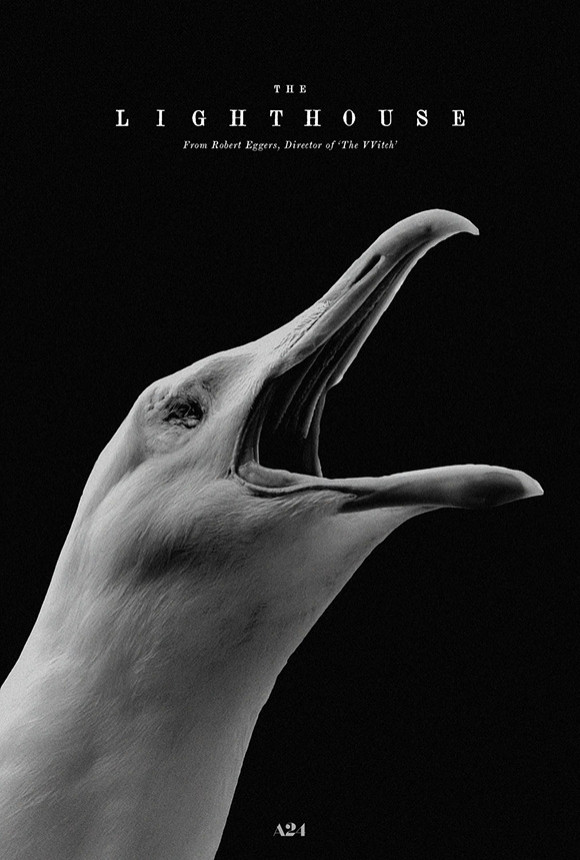
Nice to see you again, fans of the cinema! This is the Face-Off, where two movies enter and both movies leave, but one leaves in a slightly better light. Yes, here we take two competitors and compare their key elements and see who comes out the champion. It's a fierce competition that results in blood, tears, and online arguments, but the more brutal the battle, the sweeter the victory.
There's no denying the last few years have offered so much to love in the way of uniquely unsettling and terrifying genre fare, with directors like Jordan Peele, Jennifer Kent and Ari Aster gifting us with some modern marvels of horror. The new decade hasn't gotten off on the right foot on the horror front, with mainstream releases THE GRUDGE and THE TURNING leaving audiences wishing the movie they just saw would be buried and forgotten. This weekend offers yet another new horror entry in the first month of 2020 in Osgood Perkins' GRETEL & HANSEL, so we will see if we can end the month on the right foot. With all this spooky stuff kicking off the new year I thought it prudent to look back on two genre offerings from the previous decade that will likely be looked back on fondly with chilled-spines. One of them is one of 2019's most talked-about movies, THE LIGHTHOUSE, from director Robert Eggers, which has hit Blu-ray and DVD, and now seems as good as any to look at it side-by-side with Eggers' first door-busting feature, THE WITCH.
With his first movie, Eggers dug into New England folktale vibes to tell a story about a family facing a crisis involving both natural and supernatural elements, as demonic forces tear the family apart and send them into chaos in the middle of the wilderness. Following up that critically-acclaimed entry a few years later, Eggers again dug into some folktale elements with the "dark and stormy tale" set against the backdrop of the 1800s, focusing on two lighthousekeepers who don't exactly have the easiest relationship. Also a critical darling, both movies have cemented Eggers as a director to always been on the lookout for, and it boggles the mind to think about what he will come up with next. Seriously, I'm sure whatever it is it will drive us all clinically insane by the end.
But, that day is yet to come, so now it's all about looking at his two movies side-by-side, and to see which of his spooky, suspenseful folktales spins the best yarn, and which of those yarns was best spun with the, you know, yarn-spinning devices at his disposal.
Anya Taylor-Joy as Thomasin
Ralph Ineson as William
Kate Dickie as Katherine
Harvey Scrimshaw as Caleb
Ellie Grainger as Mercy
Lucas Dawson as Jonas
Robert Pattinson as Ephraim Winslow/Thomas Howard
Willem Dafoe as Thomas Wake
Robert Eggers burst from the middle of nowhere with THE WITCH back in 2015, which almost instantly established him as a new force in the genre arena. It shouldn't take any viewer long to understand why, either. Even from the opening scene, with the patriarch of the central family being exiled out of the village for being too relgious in colonial America, Eggers' incredible attention to detail — the production values, lighting and the way the colonial characters talk and dress — plunges you into the cold emptiness of the 1600s and get things started on an ominous, unsettling note. From there on out Eggers — working with his whole team behind the camera — masterfully escalated the tone from chilling folktale to full-blown religious hysteria in the finale. Never does he overplay his hand, leaving the most terrifying elements off-screen. Not only is there some devil work afoot, but how the family responds to it is equally menacing, moving between scenes and interactions like directing an intimate stage play. In terms of working with actors, Eggers gets unreal mileage out of his cast, which consists of seasoned veterans Ineson and Dickie and young newcomers. They handle his era-faithful dialogue with apparent ease (would love to see a bloopers reel), and how he crafts their dynamic against a claustrophobic setting is what gives the movie its palpable, ever-escalating sense of dread. With his first feature, Eggers proved to have incredible talent on numerous fronts, blending excellent visuals with committed performances and never losing the deeper themes and sense of religious-heavy malice.
Eggers took his time getting his follow-up feature to the screen, but cinephiles certainly had their eyes peeled when it was announced Willem Dafoe and Robert Pattinson would be joining him. Jumping forward a few hundred years but still taking place in a period setting, THE LIGHTHOUSE found Eggers operating in the same lane of ominous atmospherics. Much like with THE WITCH, you can tell instantly this movie is made by a director with a singular, focused vision. The elements seen in his first movie, which made him a name to look out for, are on display here, like keeping information off-screen and letting the environment influence the behavior of the characters. The same is said for that attention to period detail, with Eggers' team in the art, costume and other departments getting all the smallest features just right. Yes, we got what we should've expected from a director like Eggers, and yet he still pushed himself so much more. Working with Jarin Blaschke (now Oscar-nominated for his work) to give the movie a haunting, visceral black and white look through a 1:19 aspect ratio, Eggers' movie is somehow more claustrophobic than his last, all the more so by shrinking his cast down to two men. As much as he is an astute visual filmmaker, Eggers has proved himself a tremendous actors' director. The work he gets from his ensemble in WITCH is exceptional, but he gets out of Dafoe and Pattinson will stand as monumental (and also overlooked…Academy) achievements in their careers. On top of that, LIGHTHOUSE finds Eggers doing something he didn't do much of in WITCH, which is balancing different tones. Starting off suitably dark and mysterious, he weaves in humor in unexpected ways — mostly through Dafoe's saltiness and pitch-perfect farting. It's an odd movie that always manages to be unsettling, all before it gets brazenly bizarre in the end. Here, Eggers is taking the style he demonstrated on WITCH and pushing himself even further with more surreal, gripping visuals, and getting not one, but two show-stopping performances right alongside each other.
Centering on immigrants who came over from England, the way Eggers wrote the doomed family at the movie's core sound, well, exactly how people from England in the 17th century would sound. There are a lot of “Thous” and “Nays” being thrown around, and blending with the production design and costume work, this dialogue perfectly compliments the haunting atmosphere Eggers cultivated. For a movie so detail-oriented, his work with the dialogue makes everything all the more absorbing and thus more unnerving. It feels like you're watching a story out of another time unfold, surrounded by something mystical and evil. Running through the dialogue are seasoned pros — and young stars who come off as — who have seemingly made their bread and butter reciting The Bard every day, bringing to life their struggling characters with startling realism. Their characters all feel three-dimensional and at odds with one another, Eggers slowly breaking them down as the story progresses. As for the story progression, it's all about this staunchly religious family slowly unraveling as they fail to conquer the wilderness, their minds succumbing to the darkness around them. It moves like a stage play, examining the behavior of people who seem to love God out of fear and crumble when none of their prayers are answered. Eggers' work is so focused on character interplay and them responding to what they cannot see. While the family as a whole all get ample time, at the heart of it all is Thomasin. She can be seen as a representation of the women who were accused of witches during this period in early America, accused with no evidence. But Eggers flips the outcome and has her coming out the survivor, that final scene where she is reborn anew with the coven, laughing hysterically always hits with such visceral force. In all, his dialogue is certainly worthy enough material to champion the script, but his craft of the characters, the strong themes, and delving so richly into a period setting and mining it for all the dark treasures inside is an even better testament to Eggers' writing skill.
Initially started by Eggers' brother Max, Robert stepped in to flesh out the script for THE LIGHTHOUSE, giving it it's period setting and honing in on the true story of Smalls Lighthouse Tragedy, an incident involving two keepers named Thomas Howell and Thomas Griffith, with the latter dying during their assignment. Of course, Eggers threw in his ingredients to spin a dark yarn about two men working a lighthouse together, spiraling into madness with all the seabirds in the world watching. While Robert's script for WITCH kicks things off quickly by giving the baby to the witch, the Eggers' work starts very slowly, centering the tale on the questionable Winslow and his pedantic work through all his old-timey chores. Going from a small family in the wilderness to a two-man team on a rock, the challenging back and forth between the two characters in their script is instantly established with the pirate-speaking Wake pushing a lot of Maine-speaking Winslow's buttons. Eggers' penchant for authentic dialogue is back, with Dafoe's Wake throwing around a ton of “Ye” and “Yer” usage and being generall salty in everything he says, which also makes for a lot of unexpected comedy. The two actors bring the characters on the page to life thunderously, Winslow keeping much to himself before erupting come the finale. Throughout the movie there are so many great moments and big speeches that make even the most doldrum tasks and circumstances seem entertaining. In writing a movie that tells a tale about identity and guilt, their script uses a lot of time to establish the atmosphere and simply live in the era. This all to showcase of the monotony of the labor, thus sowing the seeds of their mental deterioration, but it takes a while for the meat of the story to become compelling. When it does, the story almost seamlessly shifts from introspective to outwardly bizarre, which is where the script shines brightly. In WITCH, Eggers able to operate on the same level of mystery and complexity in his story, all while immediately digging into the enthralling dynamic of the family, wasting not a moment. Still, in the Eggers' script here, individual characters are written so well and with stronger personalites, as the story as a whole eventually begins to juggle more engaging material in the latter half. On those notes, there is so much to love about both scripts, from the clarity in story and theme of THE WITCH to THE LIGHTHOUSE's bursts of mad genius and bold character moments.
Bits:
Gone baby Gone
Witch’s Ritual
Meet Black Phillip
Thomasin Scares Mercy…in Jest!
Seduced by The Witch
Terror in the Attic
Breastfeeding
Witch in the Barn
Killed By Black Phillip
Killed Thy Mother
Living Deliciously
One of the Witches
Lines:
Black Phillip: “Wouldst thou like to live deliciously?”
—–
The Twins: “Black Phillip, Black Phillip, a crown grows out his head…”
—–
William: “Did ye make some unholy bond with that goat?!”
—–
Thomasin: “I am that very witch. When I sleep my spirit slips away from my body and dances naked with The Devil. That's how I signed his book.”
Mercy: “No!”
Thomasin: “He bade me bring him an unbaptized babe, so I stole Sam, and I gave him to my master. And I'll make any man or thing else vanish I like.”
—–
Caleb: “My lord! My lord! My love! My sole salvation! Take me to thy lap!
Bits:
Arriving at the Lighthouse
A Toast to 4 Weeks
The Light
Seabird
Octopus in the Light
Killing a Seabird
What
Wake Curses Winslow
Mermaid Sex
The Fight
(Almost) Buried Alive
Axe to the Head
Unworthy of the Light
Feast for the Birds
Lines:
Wake: “DAMN YE! Let Neptune strike ye dead, Winslow! HAAAAAARK!”
—–
Wake: “…forgotten to any man, to any time, forgotten to any god or devil, forgotten even to the sea, for any stuff for part of Winslow, even any scantling of your soul is Winslow no more, but is now itself the sea!
Winslow: “Alright, have it your way. I like your cookin'.”
—–
Winslow: “What?”
Wake: “What?”
Winslow: “What?!”
Wake: “What?!”
—–
Wake: “Why’d ya spill yer beans?”
—–
Wake: “Bad luck to kill a seabird.”
—–
Winslow: “Bark, I says, bark!”
—–
Wake: “How long have we been on this rock? Five weeks? Two Days? Where are we? Help me to recollect.”
—–
Winslow: “You think yer so damned high and mighty cause yer a goddamned lighthouse keeper? Well, you ain't a captain of no ship and you never was, you ain't no general, no copper, you ain't the president, and you ain't my father — and I'm sick of you actin' like you is! I'm sick of your laugh, your snoring, and your goddamned farts. Your damned goddamned farts. Goddamn yer farts!”
—–
Wake: Doldrums. Doldrums. Eviler than the Devil. Boredom makes men to villains, and the water goes quick, lad, vanished. The only med'cine is drink. Keeps them sailors happy, keeps 'em agreeable, keeps 'em calm…”
—–
Winslow: “If I had a steak… I'd fuck it.”
—–
Wake: “Should pale death with treble dread / make the ocean caves out bed, / God who hear'st the surges roll, / deign to save out suppliant soul.”
Mark Korven's score for THE WITCH is the stuff to make your skin crawl, with the string-centric intro of “What Went We” to give haunting life to the endless sea of trees. The rest of the score is even more unrelenting in its terror-evoking atmospherics, using minimalist techniques to build up the dread into something deeply ancient and malicious. The emphasis is on string orchestrations that often blend with heavy thematic sounds, the former getting faster and shriekier and the latter going deeper and deeper as the family's plunge into madness does likewise. Throw in some clacking noises and the occasionally nightmare-inducing vocals in tracks like “Banished” and “Caleb's Seduction” and there's a cavalcade of sounds going on that make the movie feel twisted and chaotic. It's goddamn scary, is what I'm getting at, and because so much is owed to the mood of the surroundings the score goes a very long way in making THE WITCH an unforgettable horror classic.
Korven and Eggers reteamed for THE LIGHTHOUSE, with the composer again favoring minimalist sounds that benefit the tense atmosphere. Whereas with THE WITCH he dug into the terror and mythos of the environment with a bit more energy and dread, Korven's work on LIGHTHOUSE is, at least at first, a bit more distant and quiet. It's sullen as the men get to the rock, Winslow getting used to his surroundings and duties. Low hums mimic fog horn sounds, as trickles and less dominant strings heighten a sense of curiosity and mystery, perfect for the “What the hell is going on in this lighthouse and with these guys?” approach. These lower hums and generally quieter, even ethereal, themes eventually erupt into hard-hitting pieces that highlight the bizarre, shocking moments, such as in tracks like “Mermaid Lust/Stabbing the Charm” and “Why'd Ya Spill Yer Beans?” Another great score from Korven, and one that finds a way to be very different from his work on THE WITCH while being unnerving in similar ways. This all said, I like the music for THE WITCH more, as it goes further in emphasizing the dark, unsettling surroundings and can linger long after the movie ends.
As I've perhaps said once or twice during this piece, Eggers is a man who likes to make sure all the details are just right in every respect. For a movie that takes place in the 1600s, that means lots of things being covered in mud and everything seeming generally terrible. With Craig Lathrop on the production design side and art direction from Derek Connell, Andrea Kristof, the dour look of the family's “farm” meshes perfectly with the constant overcast, all so everything looks depressing and suited for evil goings-on. We've seen period costumes and settings like this plenty of times, but between the excellent cinematography from Jarin Blaschke, the equally great work from costume designer Linda Muir, and the work of the cast, everything feels so much more lived-in and authentic to the time. It's a beautiful-looking movie for sure, and the minimalism of it all goes a long way in giving everything enough space to make the surrounding woods all the eerier.
Again, gotta love those period details. In THE LIGHTHOUSE Eggers steps into a different setting, and one that looks a little more unfamiliar and ripe for much more personality. The Lighthouse itself, which was built for the production, comes off like a nondescript maze, filled with various hallways and rooms, the sounds of dripping water filling each one. Immense props go to much of Eggers' returning team, like Blaschke, Lathrop, and Muir, with Matt Likely coming on as art director. The rock they're on feels like a hidden world, operating an established mythology and not by the laws of nature. Much like their work on WITCH, the simplicity of the lighthouse makes it so that the drama between the actors shines, with the impeccable design making the lighthouse feel like a vicious character itself. As for the costumes, the deep dive into how sea-faring men and lighthouse keepers dressed brought out a variety of different looks, with Muir having to work on the contrast and design of outfits moreso than color, given the black and white approach. THE WITCH looks great, but the sheer visceral power of what we see in THE LIGHTHOUSE will go a very long way in making this a movie to come back to over and over again.
What's made the last few years such a fantastic period for horror movies is that we're getting more and more offerings that diverge away from the thrills of studio fare and what Blumhouse is putting out. That stuff is not necessarily bad, but movies like THE WITCH have become classics by focusing less on thrills and gore on-screen and more about the psychological terror that can come from a gripping sense of atmospheric dread. Here, Eggers is all about establishing a truly haunting, mysterious setting in colonial New England, digging deep into religious hysteria and religion-fueled fears of the time. A witch does make an appearance every once in a while to f**k things up, but all of the terror is about what's lurking off-screen, with the panic of the family sending them further into despair and lunacy. Factor in the trying circumstances of survival, and never for a second does Eggers give the audience room to escape this growing hell, with family ties shaking and breaking and the presence of Black Phillip lending a demonic air. What makes Eggers such a great filmmaker is how quickly he's able to make all of this so palpable right from the start, knowing exactly how everything should look and sound. It's all very unsettling from minute one, and from there it all just builds and builds.
If THE WITCH was going for more dread and straight evilness, THE LIGHTHOUSE is aiming for more of the psychological terror, and manages to be just as effective. The black and white presentation and the tight aspect ratio establish an atmosphere of extreme tension and suspense. As soon as the duo makes land, there's something extremely off about their home for the next few weeks, and something especially off in Winslow as a character. Wake is more open about who he is, but there's something suspicious about Winslow, and he views everything with even more suspicion. This places the audience in a very interesting position, where you're seeing everything through the eyes of a man who is hiding so much but is in an environment with just as much being held from him. As a result, there's no telling what's going to come from the story, and even if it takes some time to get there, there are all sorts of strange happenings going on (naked Dafoe, intimidating seabirds). How everything is shot conceals so much from us, endlessly building on a growing, mind-melting air of suspense. When it does get to the end, and the madness is at full tilt, everything goes bonkers and we got octopus tentacles, mermaid sex, barnacle-covered Dafoe and so much to shock the sense and send you into psychological turmoil.
Awards:
(Nominee) Best Breakthrough Performance: Anya Taylor-Joy
(Nominee) Best Horror Film
**43 wins, 65 nominations per IMDb**
Praise:
Rotten Tomatoes: 90% (58% Audience)
IMDb: 6.9
Metacritic: 83 (7.3 Audience)
$25 million ($40 million)
Awards:
Oscars: (results TBD, as of this writing):
(Nominee) Best Cinematography
Golden Schmoes: (results TBD)
(Nominee) Most Underrated Movie
(Nominee) Best Horror Film
(Nominee) Best Supporting Actor – Willem Dafoe
(Nominee) Trippiest Movie
*15 Wins. 81 Nominations per IMDb* (other results TBD)
Praise:
Rotten Tomatoes: 91% (72% Audience)
IMDb: 7.8
Metacritic: 83 (7.9 Audience)
$10 million ($14 million worldwide)
As far as modern horror movies go, THE WITCH has more than earned its place as one of the top entries in the field. It's beautiful to look at, it's wonderfully acted, and it's haunting on so many levels. Eggers hit a home run with his first feature, crafting a period horror movie with such a clear vision of the characters, themes, and tone. Of the two movies here, it's by far the easiest to digest, and that is by no means a negative against the work. I myself walked out of THE LIGHTHOUSE thinking I liked THE WITCH more, and if we're talking pure horror, it will certainly be my go-to thanks to the heavy religious hysteria I find terrifying. But if we're digging into more nuts and bolts, the sheer craft that went into THE LIGHTHOUSE is too immense to deny. The production design, the visuals, the performances, and the script are all so immaculate that together it makes for a movie that shakes you to your core. However great THE WITCH is, Eggers has clearly evolved as a filmmaker here, digging into bolder, stranger territory and capturing a hurricane in a bottle. He had a singular vision for this movie and it's unlike anything we're likely to get from a modern horror film, and if the first viewing doesn't f**k you up completely, it will offer new treasures to unearth with each one.






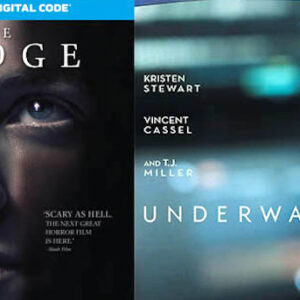
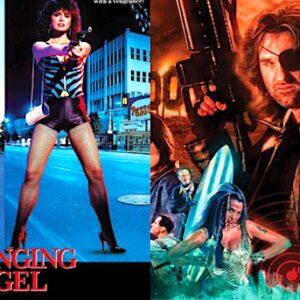
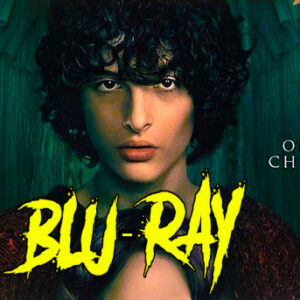
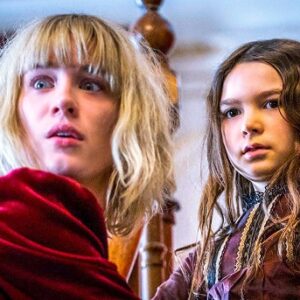


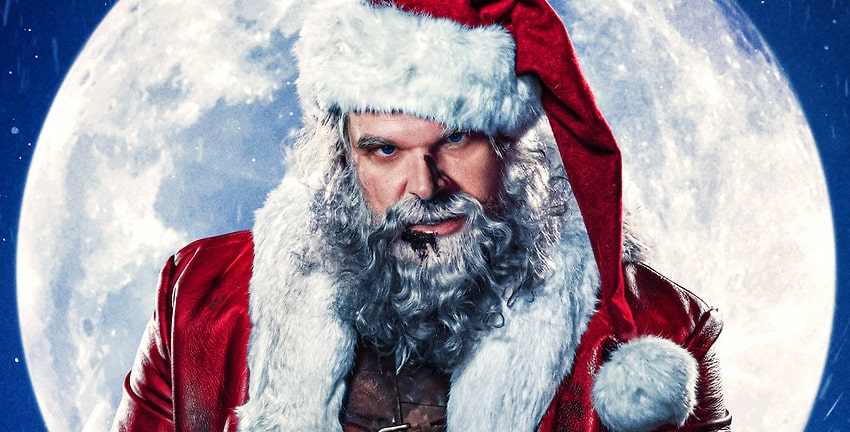

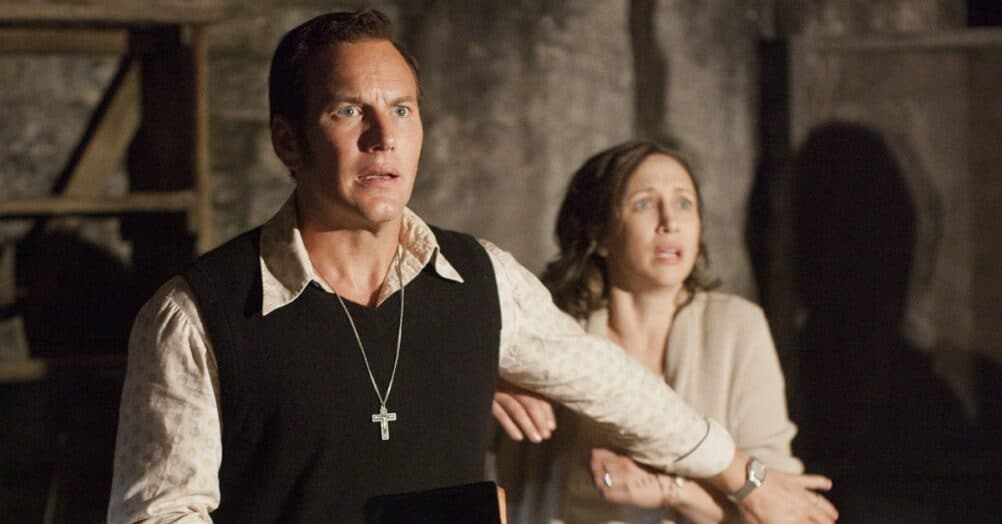





Follow the JOBLO MOVIE NETWORK
Follow us on YOUTUBE
Follow ARROW IN THE HEAD
Follow AITH on YOUTUBE